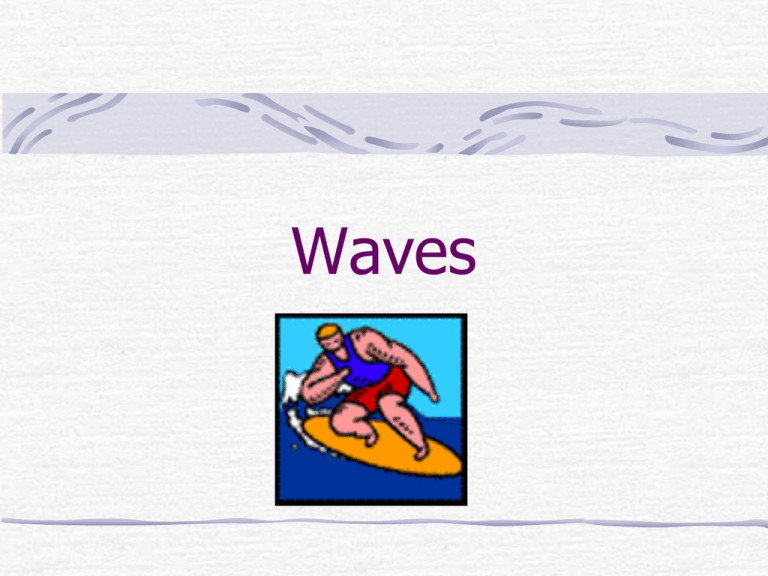Waves
advertisement

Waves Waves A wave is a disturbance that carries energy through matter or space. It does not move matter. Energy may spread out as a wave travels. Types of Waves Mechanical Waves – waves that require a medium A medium is a material that the wave moves through. Stone thrown in a pond Sound from a stereo Earthquake Types of Waves Electromagnetic Waves – waves that do not require a medium Light through space Radio waves Radar Transverse & Longitudinal Waves Transverse waves – waves in which the motion of the particles is perpendicular to the motion of the wave. Waves in a rope Longitudinal waves – waves in which the motion of particles is parallel to the direction of the wave Sound waves Simulation Characteristics of Waves Wavelength – the distance between two similar points on a wave Characteristics of Waves Amplitude – measured the amount of particle vibration or the height of the wave – half the height of the wave. Characteristics of Waves Frequency – measures the rate of vibrations As frequency increases the wavelength decreases. Electromagnetic Spectrum The electromagnetic spectrum shows all the different types of electromagnetic waves (transverse). The higher the frequency, the more energy it has. They all travel at the speed of light. Electromagnetic Spectrum Wave Speed The speed of a wave depends on the material it is passing through. The denser the material, the faster a mechanical wave will move through it (sound travels 3 – 4 times faster through water than air) Example: Door, Train Tracks A dense material will slow down an electromagnetic wave (light travels slower through glass than air) Wave Speed Mechanical waves travel fastest through solids and slowest through gasses. Transverse waves travel fastest through gasses and slowest through solids. Doppler Effect The Doppler effect is a change in the observed frequency of a wave resulting from the motion of the source or observer Waves are compressed as the sound source comes toward you producing a higher pitched sound. When it travels away the waves are farther apart producing a lower pitched sound This occurs in both sound and light. Doppler Applet Characteristics of Waves Higher the frequency the greater the energy. Lower the frequency the lower the energy. Human hearing: Dog hearing: 20 Hz to 20,000 Hz 40 Hz to 46,000 Hz




